Julian's Journey: Reflections on my Time at idalab
Julian Beimes | Associate Principal
“What excites me most about my work is when we can develop a solution that cuts through all those barriers – by blending tech, strategy, regulatory and clinical insight – and we see patients benefit right away.“
What was your motivation to join idalab?
I joined idalab in 2020 after completing my studies in Economics, Political Science and Statistics.
I had done some internships before and was drawn to consulting for the classic reasons: intellectually challenging projects, smart colleagues, a steep learning curve, lots of variety and personal responsibility. Having enjoyed working on healthcare projects, I also wanted to explore whether it’s a space I wanted to commit to long-term.
When a fellow Oxford student told me about her experience at idalab, it immediately caught my attention as a pretty unique combination of AI technology and strategy work for medtech, biotech and pharma clients.
I had also considered more generalist consulting roles at firms like McKinsey or BCG, but idalab’s depth of work beyond the usual 4-weeks strategy project, and the dedicated focus on healthcare and life science was more appealing to me. And of course, it’s much more satisfying to not deliver a deck of slides, but build something tangible.
How was your experience joining the firm?
I remember that the recruiting process felt rigorous and well-structured, with multiple interviews with the team, a case study and an interview day.
I liked that the process collected a range of data points from different perspectives and was clearly designed for long-term hiring decisions. And I can say after nearly five years: my first impression was right.
What was your first project at idalab?
I worked for a multinational pharma company on automatically identifying and prioritizing emerging technologies, a response to some breakthroughs that had taken them by surprise, like mRNA vaccines during the Covid pandemic.
I was building ML pipelines to track biotech startups and the technologies they were working on, automated the analysis of funding information and supported workshops for developing the frontend of our “technology radar”.
After that, I did some projects in biotech, one with Charité and more and more work for medtech clients.
Any standout projects since then?
One highlight was helping a medtech company improve dialysis therapy. Dialysis is a pretty standardized process with several treatments per week and a lot of valuable data points collected along the way. Which, surprisingly, are rarely used beyond monitoring the current treatment and guarding against lawsuits
Together with our client’s strategy team, we developed a data platform strategy and led the pilot projects. One was on data-driven therapy optimization, basically a set of complex KPIs analysed over time for all patients of a dialysis clinic. We were not only developing the concept and the core algorithm, but also modelled the business case, negotiated the data protection concept, analysed the data structure of patient management software, and worked with their legal team on a shockingly large number of contracts. And of course, travelled to a clinic to pick up data on a USB stick.
The pilot showed that our solution was really helpful to flag patients with actionable problems and resulted in some immediate treatment changes. We even got thank-you emails from the doctors who were happy to get a better tool for managing their patients. Our work will now be rolled out in thousands of clinics as part of our client’s therapy management system.
How has your role evolved since you started?
I began by supporting projects, doing hands-on client work. Then I led workstreams, later taking ownership of full projects. This was supported by our internal training like how to design and manage AI projects and regular feedback from my colleagues.
Today, I work with senior management at medtech companies to apply AI to their challenges. Many already have data-enabled products, such as Implantable Cardioverter-Defibrillators or MRI scanners. The potential for AI is huge, but so are the hurdles: complex regulation, legacy tech, organizational silos etc.
What excites me most about my work is when we can develop a solution that cuts through all those barriers – by blending tech, strategy, regulatory and clinical insight – and we see patients benefit right away. Like the project on data-driven therapy optimization for dialysis patients.
Over the last 12 months, I have been moving more and more into developing my own client relationships, building expertise and visibility, and putting together collaboration with leading research institutions like the Charité. This is a part I particularly enjoy. There are a lot of curious and driven people who want to improve healthcare, and I can really shape what I am working on.
What makes the work at idalab unique for you?
We often work under challenging circumstances. Biology alone is complex and I already mentioned that we regularly encounter legacy tech, compliance requirements and so on. That is why many AI projects never move beyond a first Proof-of-Concept.
But with the right team, you can make a real difference. We tackle everything from the strategy and concept to cloud architecture, AI methodology, GDPR compliance, and healthcare business models. For some projects, we have shaped the AI solution from the first slide to the roll-out.
Also, the people here are super-smart, collaborative, and fun, and you get the chance to build your area of expertise early on.

